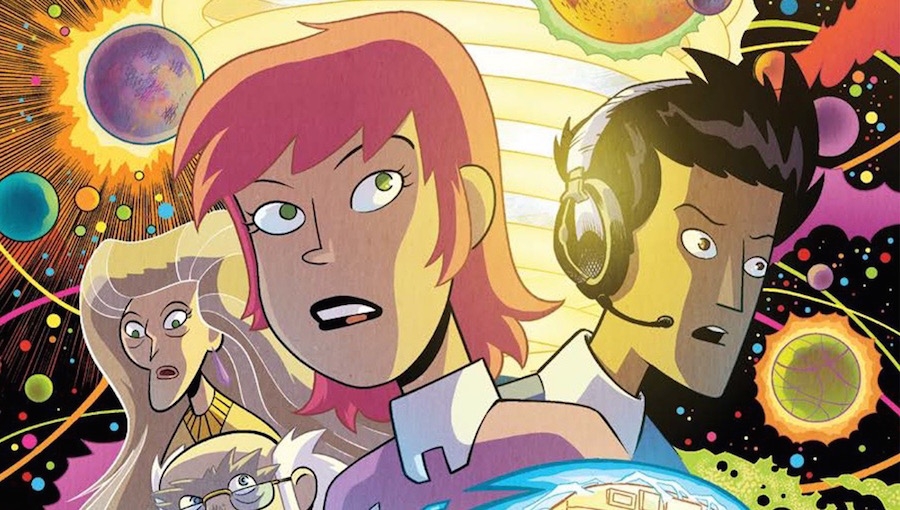“The impossible isn’t a limitation—it’s an invitation.” These words, oft-repeated by a number of characters, are the driving force behind Impossible Incorporated. They open the door for everything from time travel to psychic communication to an exploration of the multi-verse—at least in theory. Most of what we get from this comic in actuality is metaphysical philosophy lessons.
Number Horowitz is a 17-year-old girl from a family of geniuses. Her father Goliath created interdimensional travel, time travel, and a host of other innovations that his contemporaries thought were only the stuff of science fiction. Then, one day, 11 years ago, he went off on an adventure and disappeared.
Now, Number and the rest of the team at her father’s old company (Impossible, Inc.) are determined to set out on a trip through time, space, and infinite universes to find out what happened to him and, if possible, bring him home. Along the way, they find a city at the center of reality, termites that feed on the fabric of time, nihilistic, genocidal aliens, and more.
There’s a lot of potential for incredible adventures throughout this story, but it felt to me like we only ever got glimpses of those adventures. We’re told that time travel is a common occurrence in this world, but we don’t really get to see it. We see manifestations of infinite alternate universes but never really get to explore any of them.
Instead, we’re treated to multiple characters waxing philosophic about the nature of reality and the universe. Everyone from across the infinite universes is connected, nothing is everything and everything is nothing, and reality is nothing more than a cosmic illusion—either our illusion or someone else’s. At times, long stretches are devoted to explaining these concepts—and then explaining them again in subsequent issues.
In general, there’s a whole lot of exposition here. The narration often reads more like a novel than a comic. It’s filled with detailed descriptions of what the various images mean, or how Number reacts to them. Even some of the dialogue is related through narration instead of word balloons, which isn’t necessarily a bad choice, just an odd one considering the medium.
As I said already, the narration can get kind of repetitive (and yes, I see the irony in my making that point twice). Concepts that have already been explained to us are explained again, and clever bits of philosophy are repeated numerous times, often using the exact same words. There’s also an extensive recap at the beginning of each chapter/issue, sometimes going so far as to explain the entire plot of the previous issue from scratch.
All this isn’t to say that the comic isn’t entertaining, however. It introduces a number of fascinating concepts and really cool ideas. It doesn’t always explore these concepts as thoroughly as it could, but when they are explored, it’s done with vivid and colorful artwork that’s a joy to look at.
There’s a lot to unpack in this comic. At times, it can be a bit confusing, and at others, a bit esoteric; however, if you’re up to the challenge, it does take you on a pretty interesting journey in the end.
Creative Team: J.M. Dematteis (story), Mike Cavallaro (art, lettering, and colors), Frank Reynoso and Gabrielle Gomez (colors), Sarah Gaydos, David Hedgecock, and Chase Marotz (editors)
Publisher: IDW Publishing
Click here to purchase.

